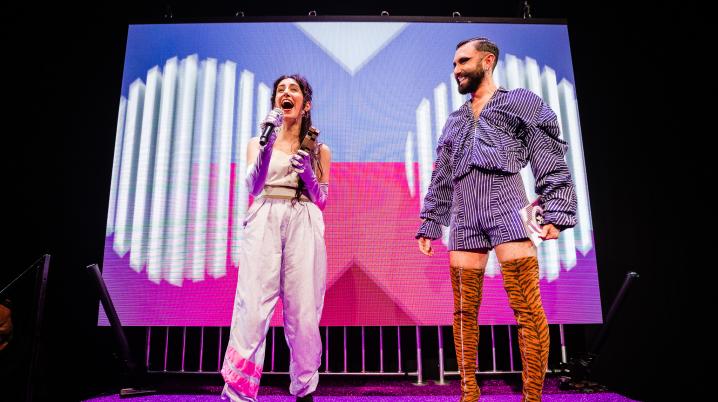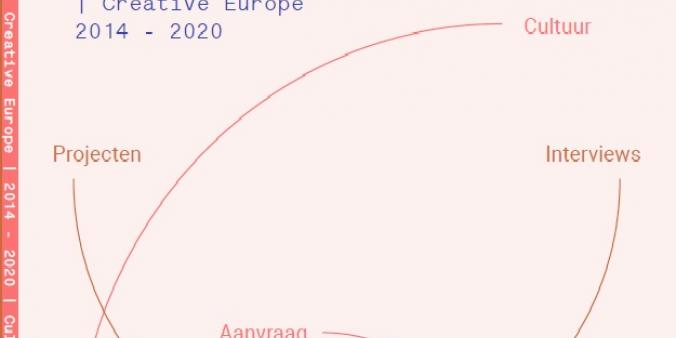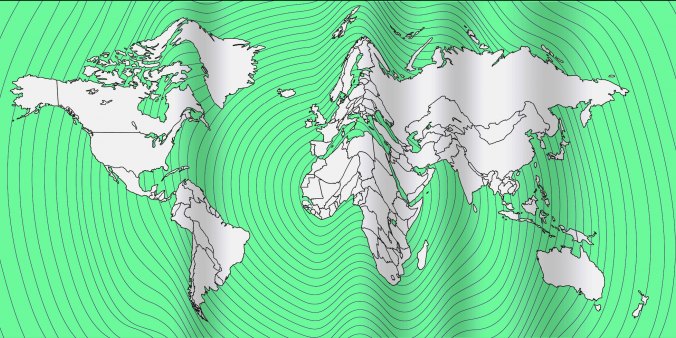
“If I had to do it all over again, I would start with culture.” This quote is often attributed to Jean Monnet, one of the founding fathers of the European Union, although it is highly uncertain that he has ever said this. His ideas for European cooperation were rooted in economic and political rather than cultural interests. Monnet was the first president of the European Coal and Steel Community (ECSC), the predecessor of the EU. It was established soon after the Second World War, with the signing of the Schuman declaration on 9 May 1950 – an event that is celebrated yearly during Europe Day. It was meant to make six European countries economically dependent on each other, by creating a common market for the steel and coal industries. Although its name referred to the industry interests, the underlying idea was that this codependency would prevent new conflicts between post-war West-Germany, Italy, France and the Benelux countries.
First steps
Only with the establishment of the European Union in its current form, as laid down in Maastricht Treaty in 1992, the first steps towards a common European cultural policy were made. Cultural policy still mainly fell within the national domain of all EU member countries, but the notion of a shared European cultural and creative sector that should be strengthened and safeguarded took root. The first MEDIA programme was launched in 1991 to support the European film and television industry, partly to increase the industry’s competitiveness against Hollywood. Around the same time, the Cities of Culture were launched, which were the predecessor of the European Capitals of Culture. Each year, around two European cities carry the title of Europe’s cultural capital. The MEDIA programme is celebrating its 30th anniversary this year. In 2000, the Culture programme was added to the mix, which was meant to support the rest of the cultural and creative sectors in their international ambitions.
Creative Europe: strengthening the cultural economy?
In 2014, the MEDIA and Culture programmes merged together in the first Creative Europe programme, in which they each form a subprogramme in their own right. A third, cross-sectoral strand supports projects that involve both the audiovisual and other creative and cultural sectors.
The Creative Europe work programme for 2014-2020 was established in the last days of the euro crisis. The economic value of culture was strongly emphasised in this work programme, as the cultural and creative sectors in Europe are a billion-euro industry. The report Rebuilding Europe by Ernst & Young that was published in January 2021 states that the European Cultural and Creative industry represented 4.4% of the total EU GDP, and provided 7,6 million jobs, more than eight times as much as the whole telecommunications industry.
However, Creative Europe is not purely an economic programme, and notions of audience development and inclusion are important pillars in it. In the newly launched Creative Europe programme for 2021-2027, we see a strong emphasis on priorities such as sustainability and the European Green Deal, digitisation, inclusion and media literacy. In a world in which fake news is rampant, it’s not surprising that Creative Europe 2021-2027 will now include calls for the European journalism sector.
In the other EU programmes that have been launched this year, there are also possibilities for the culture and creative sectors. Programmes like Erasmus+ and Horizon Europe offer funding opportunities for a wide array of organisations. You can find a list of funds in DutchCulture’s EU fund finder (in Dutch). There is also a specific loan guarantee system for the culture and creative sectors part of the EUinvest programme, which in the Netherlands is carried out by Triodos.
More than 40 countries participated in the last Creative Europe programme. Next to the EU countries, these include EEA/EFTA countries such as Norway and Iceland; (potential) EU candidate countries, such as Albania and Bosnia & Herzegovina; and European Neighborhood Policy countries such as Ukraine and Tunesia. It’s expected that most of these countries will participate again in the 2021-2027 Creative Europe programme, but each country will have to renew its negotiations with the EU first.
Gay kangaroos
On the list of possible non-EU participating countries for 2021-2027, one country is making an interesting reappearance. Turkey had previously been a participating country but decided to quit the programme in 2016 when a German orchestra commemorated the Armenian genocide during a Creative Europe-supported concert. Turkish President Erdogan was not amused, and on 1 January 2017, Turkey stepped out of the programme.
The most remarkable absentee on this list, although hardly surprising, is the United Kingdom. After Brexit, the UK doesn’t want any EU interference in the cultural domain. Newspapers like the Daily Mail and the Sun have repeatedly criticised Creative Europe for splurging tax-payers money on tv-shows about the dangers of climate change, or dance lessons for refugees, or children’s books on gender identity – the implied message being that Creative Europe is a vessel for EU left-wing propaganda.
It’s a sentiment that’s shared with some politicians, especially those with a nationalist agenda. With the launch of the new Creative Europe programme, the German MEP Nicolaus Fest of the Alternative für Deutschland party made a speech condemning the spending of taxpayer money on a corrupt propaganda programme such as Creative Europe, which among other things supports ‘gender books’ about a same-sex kangaroo couple adopting a child together. However, support for the Creative Europe programme is strong within the majority of policymakers. The 2021-2027 budget is increased to 2.4 billion euros (for comparison, Creative Europe 2014-2020 had a budget of 1.24 billion euros), a decision which was agreed upon by both the European Parliament and the EU member states.
The Netherlands in Creative Europe
DutchCulture houses the Creative Europe Desk NL, the Dutch contact point for the programme. We have just published a publication on the 2014-2020 Creative Europe programme (in Dutch). It emphasises the active participation of the Dutch sector, highlights a few selected projects through a series of interviews, and analyses the Dutch participation in both the Culture and MEDIA subprogrammes in the last seven years. It concludes for instance that Dutch organisations have an above-average success rate when applying for Creative Europe funding (29% for Culture as opposed to the EU average of 21%; 51% for MEDIA as opposed to the EU average of 39%).
Interested in participating in the programme? Or do you have any other questions? Please feel free to contact our Creative Europe advisors or visit the Creative Europe website.





